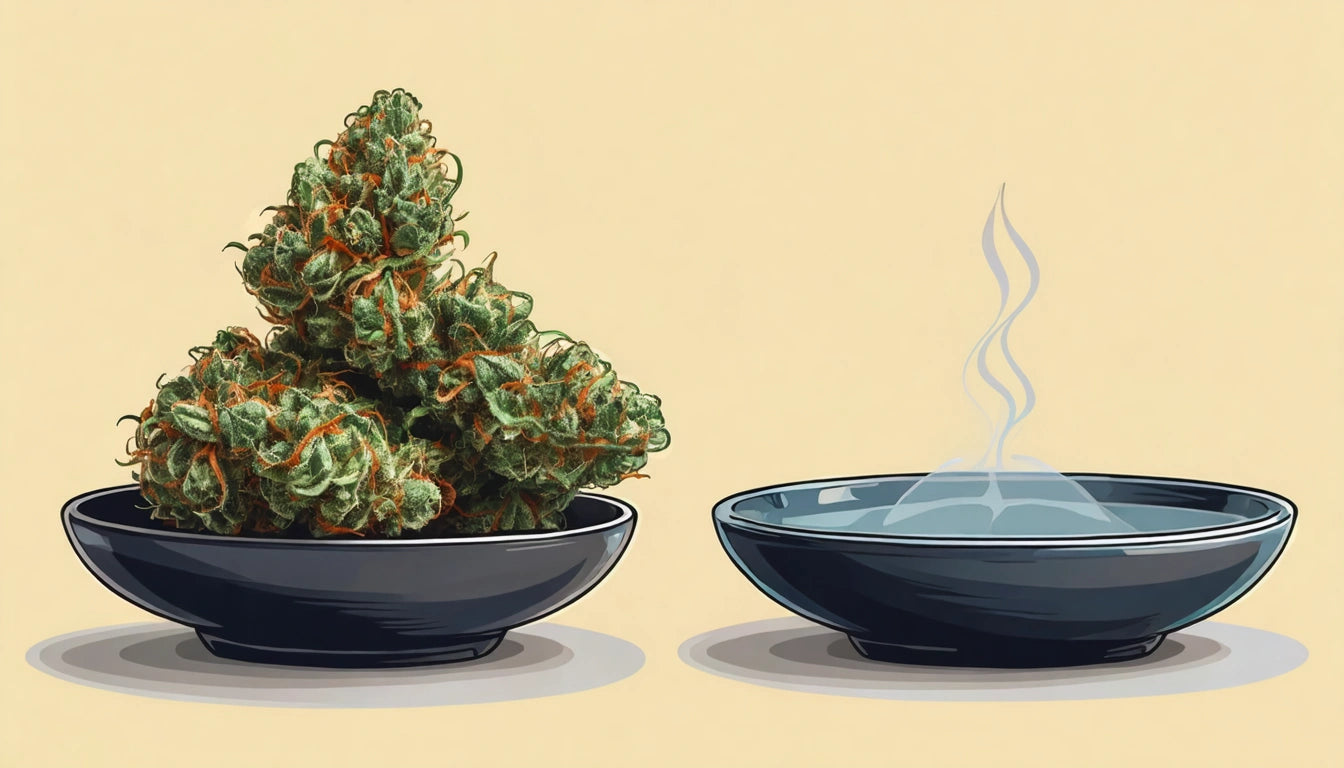Table of Contents
- What is Solventless Rosin: Basic Definition and Production
- Live Rosin Explained: Fresh-Frozen Material and Process
- Key Differences Between Solventless and Live Rosin
- Quality Indicators: How to Identify Premium Products
- Consumption Methods and Equipment Considerations
- Market Trends and Consumer Preferences in Rosin Products
Understanding the Differences: Solventless Rosin vs. Live Rosin
The cannabis concentrate market continues to evolve with premium products that emphasize purity and potency. Among these, solventless extracts have gained significant popularity, with rosin leading the charge. Two terms frequently encountered are "solventless rosin" and "live rosin" - while related, they represent distinct products with unique characteristics and production methods.
What is Solventless Rosin: Basic Definition and Production
Solventless rosin refers to cannabis concentrate produced without chemical solvents like butane, propane, or ethanol. Instead, it relies on a combination of heat and pressure to extract the desirable compounds from cannabis material. This mechanical extraction process preserves the plant's natural terpene profile while delivering potent cannabinoids.
The basic production method involves:
- Placing dried, cured cannabis flower, kief, or hash between parchment paper
- Applying controlled heat (typically 180-220 °F)
- Using pressure from a rosin press to squeeze out resinous oils
- Collecting the resulting golden-amber extract
This straightforward process can be accomplished at home with basic equipment, though commercial operations use sophisticated industrial processing equipment and specialized grinder machines to ensure consistency and maximize yields.
Live Rosin Explained: Fresh-Frozen Material and Process
Live rosin represents a specialized subcategory of solventless rosin with a critical difference in the starting material. Rather than using dried and cured cannabis, live rosin begins with fresh-frozen plant material - harvested plants that are immediately frozen to preserve the full spectrum of compounds present in the living plant.
The production process follows these steps:
- Harvesting fresh cannabis plants at peak ripeness
- Immediately freezing the material to lock in terpenes and cannabinoids
- Creating bubble hash or ice water hash from the frozen material
- Drying the resulting hash carefully
- Pressing this bubble hash using a rosin press
This multi-stage process preserves volatile terpenes that would otherwise be lost during drying and curing, resulting in a more aromatic and flavorful end product. The distinction between resin and rosin becomes particularly important when discussing live products.
Key Differences Between Solventless and Live Rosin
Starting Material
The fundamental difference lies in the starting material:
- Solventless rosin: Uses dried, cured cannabis flower, kief, or hash
- Live rosin: Uses fresh-frozen cannabis that bypasses the drying and curing process
Terpene Profile
The terpene content and profile vary significantly:
- Solventless rosin: Contains terpenes that survive the drying and curing process
- Live rosin: Preserves a wider spectrum of terpenes, including volatile compounds that would otherwise degrade
Production Complexity
The production processes differ in complexity:
- Solventless rosin: Can be produced in a single pressing step
- Live rosin: Requires multiple steps including freezing, bubble hash extraction, and then pressing
Price and Accessibility
Market positioning reflects the production differences:
- Solventless rosin: More affordable and widely available
- Live rosin: Commands premium prices due to labor-intensive process and enhanced terpene profile
For those interested in creating their own products, home production guides can help navigate the differences in technique required for each type.
Quality Indicators: How to Identify Premium Products
When evaluating rosin products, several quality indicators help distinguish premium offerings:
Color and Clarity
High-quality rosin typically exhibits:
- Light golden to amber coloration for solventless rosin
- Lighter, more translucent appearance for live rosin
- Absence of dark coloration that might indicate excessive heat during processing
Consistency and Texture
Texture varies based on processing techniques and starting material:
- Sappy, butter-like, or jam consistencies are common
- Cold cure rosins often have a badder-like texture
- Live rosin frequently has a more malleable, workable consistency
Aroma Intensity
The aromatic profile offers significant clues about quality:
- Live rosin should present intense, complex aromas that closely resemble the original strain
- Standard solventless rosin typically has a strong but slightly less vibrant aroma profile
Strain selection significantly impacts the final product's characteristics, with terpene-rich varieties generally producing superior rosin.
Consumption Methods and Equipment Considerations
Both solventless and live rosin can be consumed in various ways, though some methods better preserve their unique characteristics:
Dabbing
The most popular consumption method involves:
- Using a dab rig with quartz, titanium, or ceramic surfaces
- Low-temperature dabbing (450-550 °F) to preserve terpenes
- Cold-start techniques to maximize flavor
Vaporization
Modern vaporizers offer convenient alternatives:
- Electronic dab rigs with temperature control
- Concentrate-compatible dry herb vaporizers
- Specialized rosin vape cartridges (though these may contain additives)
Infusion
Creative consumers may also:
- Add rosin to flower in joints or bowls ("rosin topping")
- Infuse into oils for edibles (requires decarboxylation)
Proper storage techniques are essential to maintain quality, with cold storage generally recommended for preserving terpenes, especially for live rosin products.
Market Trends and Consumer Preferences in Rosin Products
The concentrate market continues to evolve with several notable trends:
- Growing consumer preference for solventless products due to perceived purity and safety
- Premium positioning of live rosin as a top-tier concentrate option
- Increasing availability of solventless vape cartridges
- Rising interest in specialized rosin products like cold cure, jam, and sauce consistencies
- Development of strain-specific rosin lines to highlight unique terpene profiles
For producers entering this space, selecting appropriate commercial equipment is crucial for consistent quality and production efficiency. The market increasingly rewards producers who can deliver exceptional flavor profiles while maintaining the purity advantages of solventless extraction.
As consumers become more educated about concentrate options, the distinction between solventless rosin and live rosin becomes increasingly important in purchasing decisions, with many connoisseurs willing to pay significant premiums for the enhanced experience of live products.











Leave a comment
All comments are moderated before being published.
This site is protected by hCaptcha and the hCaptcha Privacy Policy and Terms of Service apply.